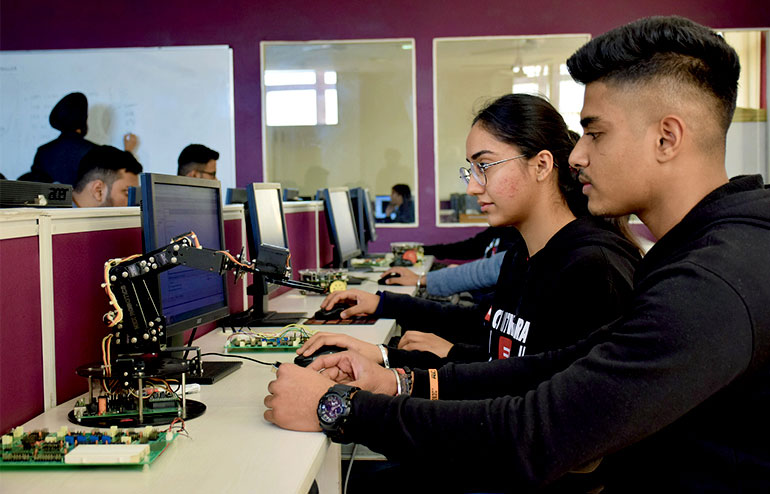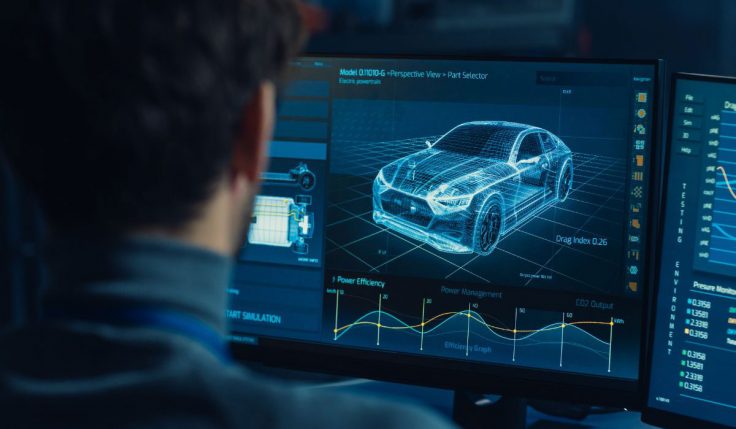The year 2021 is the era of information and computer science is reigning the game globally.
The first ‘computer-related’ courses started in August 1963 at IIT Kanpur, using an IBM 1620 system in the nation’s first ‘computer classroom,’ which was a novelty at the time in many North American and European colleges. In 1971, IIT launched its own academic leading to Ph.D. and M. Tech. degrees. The department was formally established in 1984. While the IIT network remains the crème de la crème, high-quality programmes are gaining popularity all across the country, and India’s computer science education has progressed by leaps and bounds ever since.
The tremendous diaspora of Indian IT graduates essentially built Silicon Valley in the United States, contributing significantly to the technology boom of the 1990s and as a result, to the rise of computer science education in India.
Also Read: Computer Science Engineering – A Promising And Fulfilling Career
The reverse diaspora from the US, foreign investment in the IT sector and the high priority given to this field by subsequent governments in India have all contributed to the expertise Indian graduates have in this area of work today, ranking amongst the top in the world. Foreign investment in the IT sector and Indian governments’ strong focus and precision for this sector have all contributed to Indian graduates’ competence in this field today, which ranks among the best in the world.
Fast forward to year 2021, India has a strong footing with developed countries, but it does not hold on to its 1990s favoured status. It would be presumptuous to say that the IITs are superior to national technology institutions in China, Singapore, Western Europe, or even the United States. It’s interesting to know that the most popular technologies are the same all over the world, and the race to patent and market technology isn’t easy to win. To stay on top of the highest pay scales in the worldwide market, graduates must keep up with the ever-evolving industry.
Artificial Intelligence and Machine Learning, Data Science, Full Stack Development, Robotic Process Automation, Edge Computing, Virtual Reality and Augmented Reality, Blockchain, 5G and Cyber Security, and Robotic Process Automation are the buzzwords for the year 2021.
Also Read: Top 7 Computer Science Courses With Specialization That Are In Demand
While this may sound like Hebrew to laymen at first glance, delving deeper into what these technologies are and what they do, what they perform might help us better comprehend the future professions of computer science graduates. While the first three technologies consist of analysing data and statistics, machine learning computes this data into algorithms, which are used by companies for product development, marketing, e-commerce and business needs that are constantly changing. Full Stack Development refers to software for both clients and server backends, underlining the need for people who can develop and handle software for complete e-commerce transactions.
Jobs in robotic process automation typically involve a significant amount of coding knowledge. You would need to write code that would enable computerised or non-computerised processes to be done automatically without human intervention. In sectors like financial services, robotic process automation can reduce the lead time for approving financial transactions online. It improves the productivity of the company as a whole, as well as that of its clients. VR and AR are simple programming-based technologies used for 3D simulation in learning apps, online classrooms, museum and gallery visits, or for marketing simulated spaces like stores, apartments, etc. There is not much demand for these skills. Edge Computing is the next step to Cloud Computing, where data is not stored in a central repository but is kept as close to the device as possible (on the edge).
Blockchain is used in many different applications. The significant part about the blockchain is that it is never under the complete control of a single entity due to being entirely consensus-driven. It can never change the data you store on the Blockchain, which is used widely in sharing medical data in the healthcare industry. Due to the security that Blockchain provides, this data can be shared among parties pretty much seamlessly. Another application of Blockchain is in maintaining the integrity of payment systems. Blockchain-based payment systems are currently highly immune to external attacks and theft. Blockchain can also be used to track the status of products in a supply chain in real-time. 5G, as opposed to 4G technology, provides greater speed and capacity to interlink devices more smoothly. It has been rolled out in most countries. But is still at a nascent stage here even though the demand for network engineers who know how to use 5G is high because it has been planned as the next big step by most companies and governments across the world.
Last but not least, cybersecurity jobs have been growing at three times the pace as other tech jobs, primarily due to the increase in cyberattacks on individuals and businesses. Not only are these jobs incredibly well-paying, but they are also some of the most critical positions in any firm.
Particularly, in domains such as e-commerce and retail, the importance of cybersecurity cannot be underscored. Thousands of customers store their personal and financial data on retail companies’ websites to allow for easy payments. They also have accounts and passwords, which need to be protected.
These are the jobs of the future, as seen in 2021 and computer science education is largely equipped to impart these skills in programs across the world. While some institutions or countries may be better than others at embracing these trends, access to education and subsequent recruitment are largely comparable everywhere, while pay scales may vary from country to country.






